
Visit Continental Tires in your country for local vehicle fitment
# Cycling
Tour de France spectators spectacle
More than a bike race - what makes Le Tour legendary
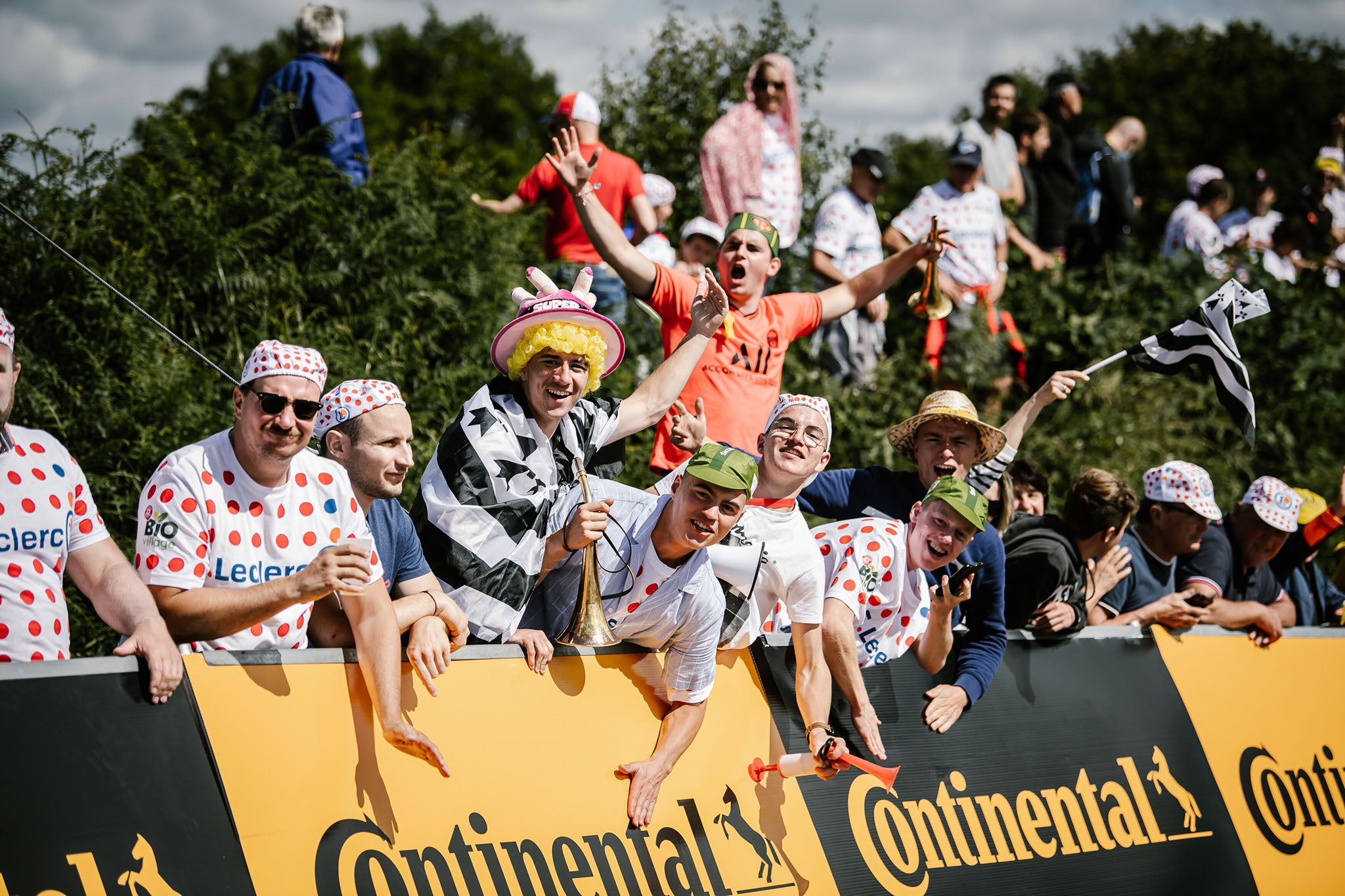
The Tour de France may be a sports event, but its success recipe requires three essential ingredients, in addition to the athletic feats of the world’s best cyclists:
- The mythology and the legends of more than a century of Tour history
- The variety and heritage of the beautiful landscapes the Tour travels through
- The fans! Find out what motivates them to follow the Tour live and what they bring to the event...
From Grand Départ to final stage - Why nothing beats watching the Tour first hand
Asked about his most memorable Tour de France experience, Jo Helsen struggles to come up with an answer. Not because there haven’t been any special moments worth remembering, but because there have been too many. The consummate cycling fan “caught the Tour de France bug” in childhood and his roadside role in the Tour has evolved over the years.
However, although he himself is a passionate cyclist, with personal connections to the professional scene in his native Belgium, he knows that the sport is far from the only attraction: “You don’t need to know anything about cycling, because it’s so much more than just a race. It’s the atmosphere, it’s the helicopters circling, it’s the publicity caravan coming by, it’s seeing the athletes with their strong legs powering up a mountain… it’s not all about cycling, there’s something else I don’t have a name for and I cannot describe.”
Meinhard Meister and Heiko Grabowski, two German fans who have witnessed the Tour live almost every year since 2004, agree that it’s about more than the race: “When you see the people lining the streets, the pride in the eyes of the locals when the Tour passes through their small village, and the expressions on the faces of the riders as they go by, that’s a completely different experience from anything you see on television,” Meister emphasizes, “Once you’ve experienced that, you just want to go back every year.”
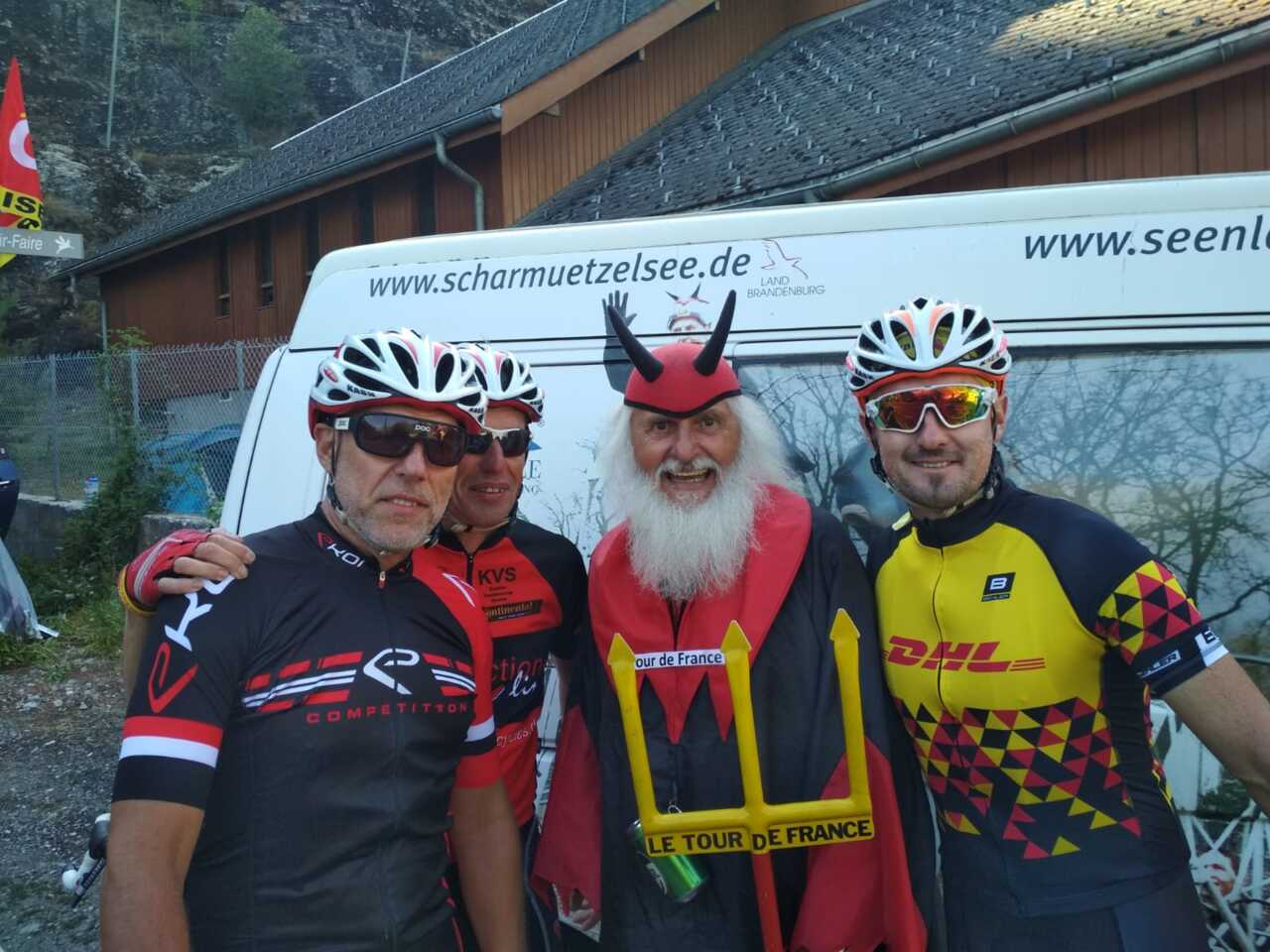 Heiko Meister (l) and Heiko Grabowski (r) meeting Tour De France superfan Didi the Devil © Meinhard Meister
Heiko Meister (l) and Heiko Grabowski (r) meeting Tour De France superfan Didi the Devil © Meinhard Meister
Travelling the Tour de France in a campervan
For the German fans, “going back” means arriving several days in advance of the most spectacular mountain stage to find a parking spot for their campervan on the ascent. The time until the peloton arrives is spent exploring scenic routes and climbing the mountain passes of the region during the day, and making friends with their roadside neighbors in the evening.
On their first trip, they had booked a hotel, but once they saw the campers parked in the French Alps, they “knew immediately: this is the way to do it”.
To this day, their TDF happy place is in bend 13 of the Alpe d’Huez. Meister remembers the first day they arrived at the foot of the famed ascent: “Before even checking into our accommodation, we were on our bikes to experience it for ourselves.
With every bend, we got more excited.” Today, he and fellow cycling enthusiast Grabowski have an endless supply of Tour memories, of people they met along the way, “campsite neighbors” they shared breakfasts with, spectators who helped them cheer on the peloton on race day, and of course of the summits they got to ride on Tour rest days. “You just have fun all day long. That’s the Tour,” Grabowski sums up the appeal of a cycling and camping holiday on the route. “You get so close to the cyclists, closer than in any other athletic competition,” he adds, “especially when they are going slowly up the mountain, you can read the emotions on their faces, and you can tell that they register the presence of the fans, the support and the encouragement when they are cheered on.
” Spectators may have a favorite, but according to Meister, they don’t begrudge other riders their success: “Maybe that’s what makes the atmosphere so special – this feeling of mutual support and enthusiasm.”
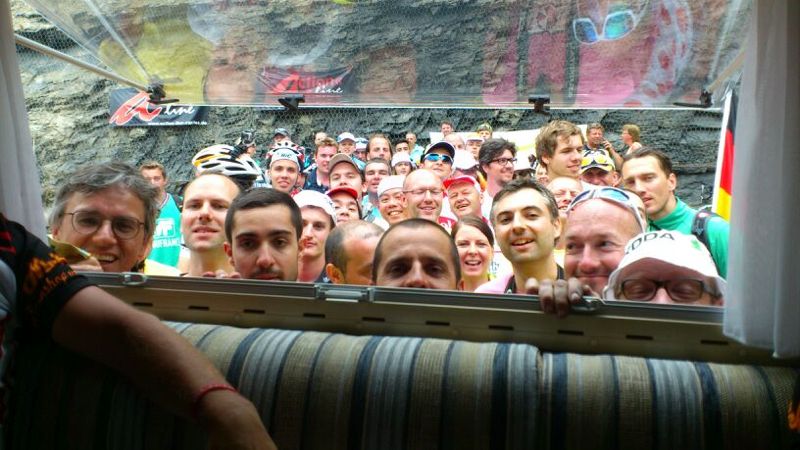 Fans trying to catch a glimpse of a TV showing the race in a motorhome at Alpe d’Huez, Tour De France © Meinhard Meister
Fans trying to catch a glimpse of a TV showing the race in a motorhome at Alpe d’Huez, Tour De France © Meinhard Meister
The best place on the race route
For Jo Helsen, a Tour de France road trip is a working holiday. He packs up his lovingly refurbished vintage Volkswagen buses and drives up to 6,000 kilometers across France in six weeks. He has accompanied the Tour with his mobile bar, Café Welkom on Wheels, every year since 2009, except for 2020. For him, it’s not only the best way to experience the Tour, but also an opportunity to share that experience with spectators from all over the world: “We have music, we have a fantastic atmosphere and of course we meet a lot of people,” he summarizes, “The whole world is at our bar, from Australians to Americans, to German and Danish people. They come from all over the world to see the Tour de France.” The bar has also seen its fair share of VIPs, he adds, “the peloton, especially the Belgian teams know us. They come by with their guests and even their riders on rest days.” However, rubbing shoulders with world-famous riders isn’t necessarily the most important social aspect of the Tour. It’s the other passionate supporters and the people behind the scenes that hold a special place in Helsen’s heart. After trading beer for miniature sausages with the Cochonou promotion team during a caravan breakdown in 2010, they connected on social media and arranged to meet en route every following year. When COVID prevented Café Welkom on Wheels from joining last year’s Tour, they exchanged presents by mail. “Now that I am talking about it I have a big smile on my face,” Helsen remembers fondly.
Although he admits that neither he nor his unusual fleet were quite prepared for the ambitious undertaking when he first hit the road, they are now seasoned pros. The non-profit he set up, which goes by the name of Les Amis Du Tour De France, now has “sponsors supporting us and a crew of ten people travelling with us. We go with three caravans and a big truck with all our supplies. It’s a big circus when we go up the mountain. I have four or five televisions, so when you’re in my bar, you can double up – see the race on television and live.”
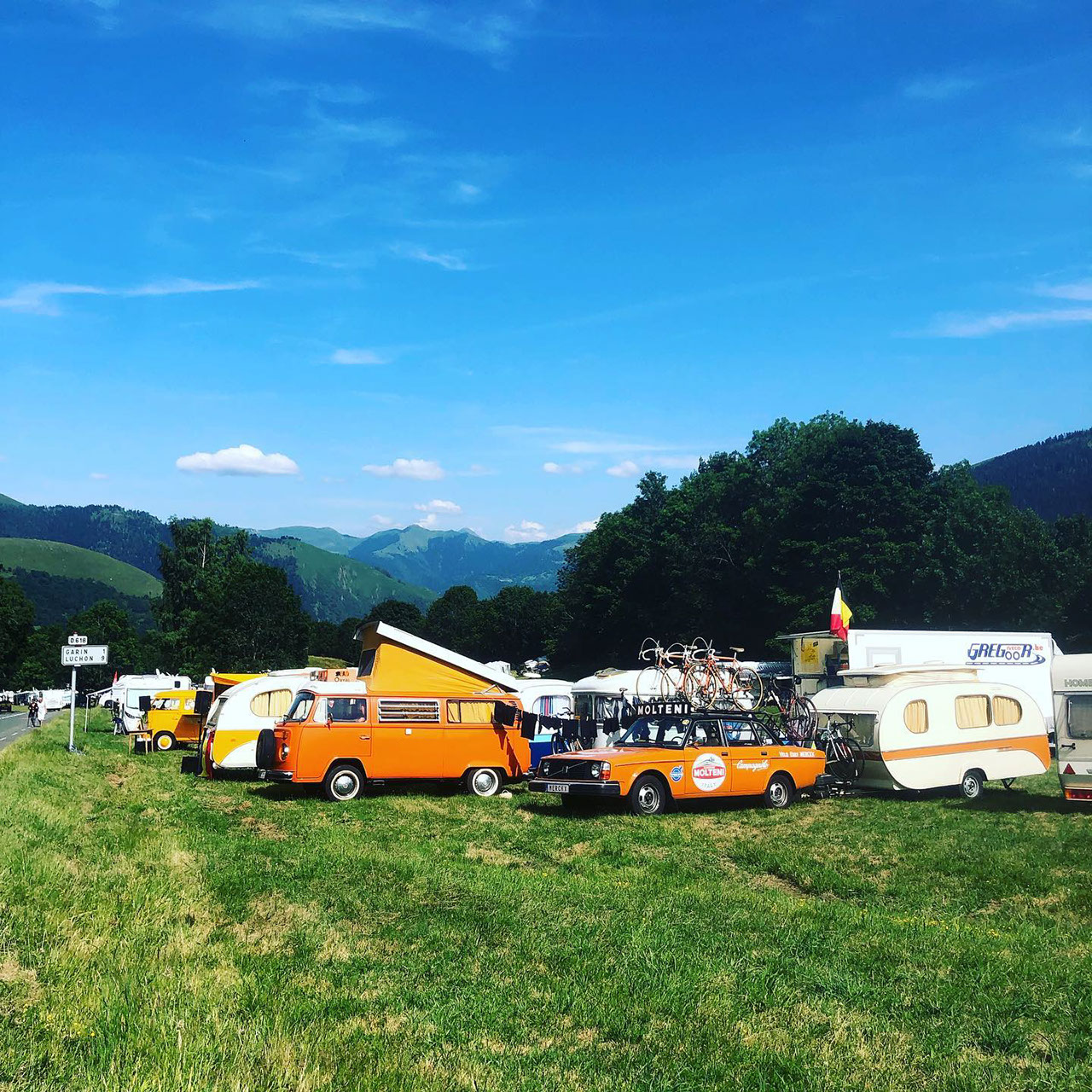 Tour de France at Col de Peyresourde in the Pyrénées ©Instagram/@lesamisdutourdefrance
Tour de France at Col de Peyresourde in the Pyrénées ©Instagram/@lesamisdutourdefrance
Jo Helsen may not be able to recall his favorite memory of the Tour de France, but ask him about the best spot in France to watch the Tour and he doesn’t miss a beat: “Col de Peyresourde in the Pyrénées. I miss it. Even talking about it now, I get goosebumps, because I haven’t been there for two years. For us, it’s really like a homecoming. If you ever want to feel the atmosphere of what we do, you have to find us there when the Tour is passing by.
”What makes this mountain pass in the central Pyrénées so special? In addition to the Tour history, there’s also the fact that the mayor has granted Café Welkom on Wheels written permission to set up on the side of the route and that the locals always stop by for a drink – and to sample Helsen’s famous pork cheek stew, served with Belgian fries. However, there’s also the appeal of a stage that is relatively quiet compared to, for example, the French Alps or the Champs-Élysées. The camping spots there aren’t suitable for regular motorhomes and, “you are still in a part of France where you can’t find any connection and are offline for three days, can’t send a message or look at the internet,” Helsen points out, “That’s also something that contributes to the adventure. Those three days are always the good days.”
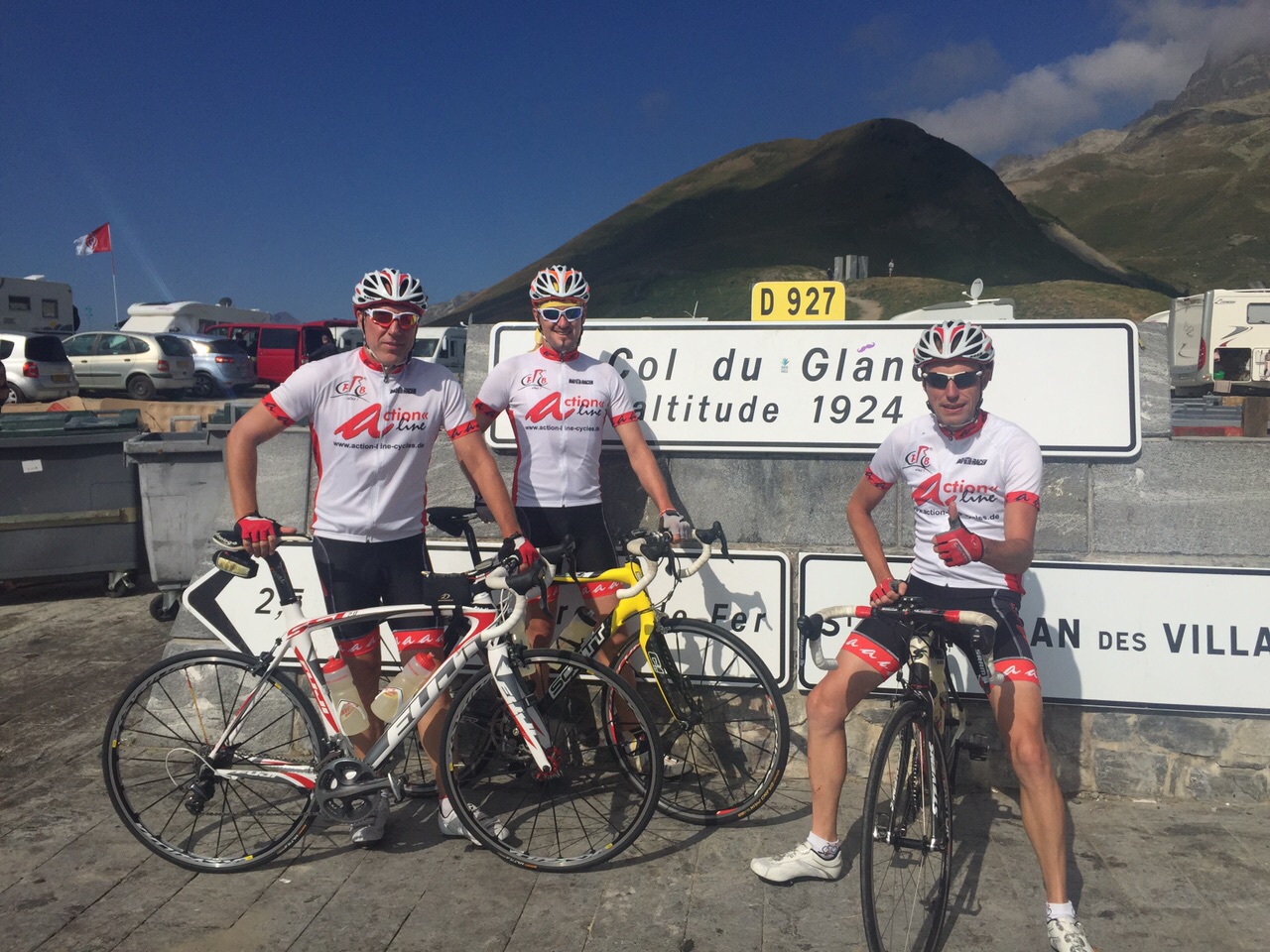 Meinhard Meister and Heiko Grabowski at the Col de Glandon in the Alps © Meinhard Meister
Meinhard Meister and Heiko Grabowski at the Col de Glandon in the Alps © Meinhard Meister
Travel tips for a campervan trip
Whether you witness the Grand Départ in Copenhagen, Denmark, soak up the atmosphere on the busiest stages of in the Alps, get a more relaxed experience in small villages on remote stages, or check into a campsite in built-up Paris to be there at the finish line, there’s nothing like witnessing Le Tour first-hand. Here are some tips to keep in mind when planning a motorhome trip to France.
- Local conditions vary, depending on where you plan to travel. Find out in advance about road closures and arrive in plenty of time to snag a camping spot on the more popular mountain routes.
- Wild camping ranges from allowed or tolerated to strictly forbidden. Make sure you you’ve booked a campsite in advance or secure a space in a specially designated car park in places where wild camping along the roadside is not allowed.
- Arrive early for the more popular stages. The best camper spots alongside the road on mountain stages can be taken as much as a week in advance. In the days and hours before race day, day tourists can create traffic jams.
- Bring a bike! This may seem obvious for passionate road riders, who don’t just want to watch the cycling. However, you’ll also need your bicycle for practical reasons. Remember, you can’t move your camper once you’ve secured a spot, so you’ll need to cycle to the nearest shops for supplies.
You can see more incredible pictures on the Instagram account of Les amis du Tour de France.
Van life at Tour de France
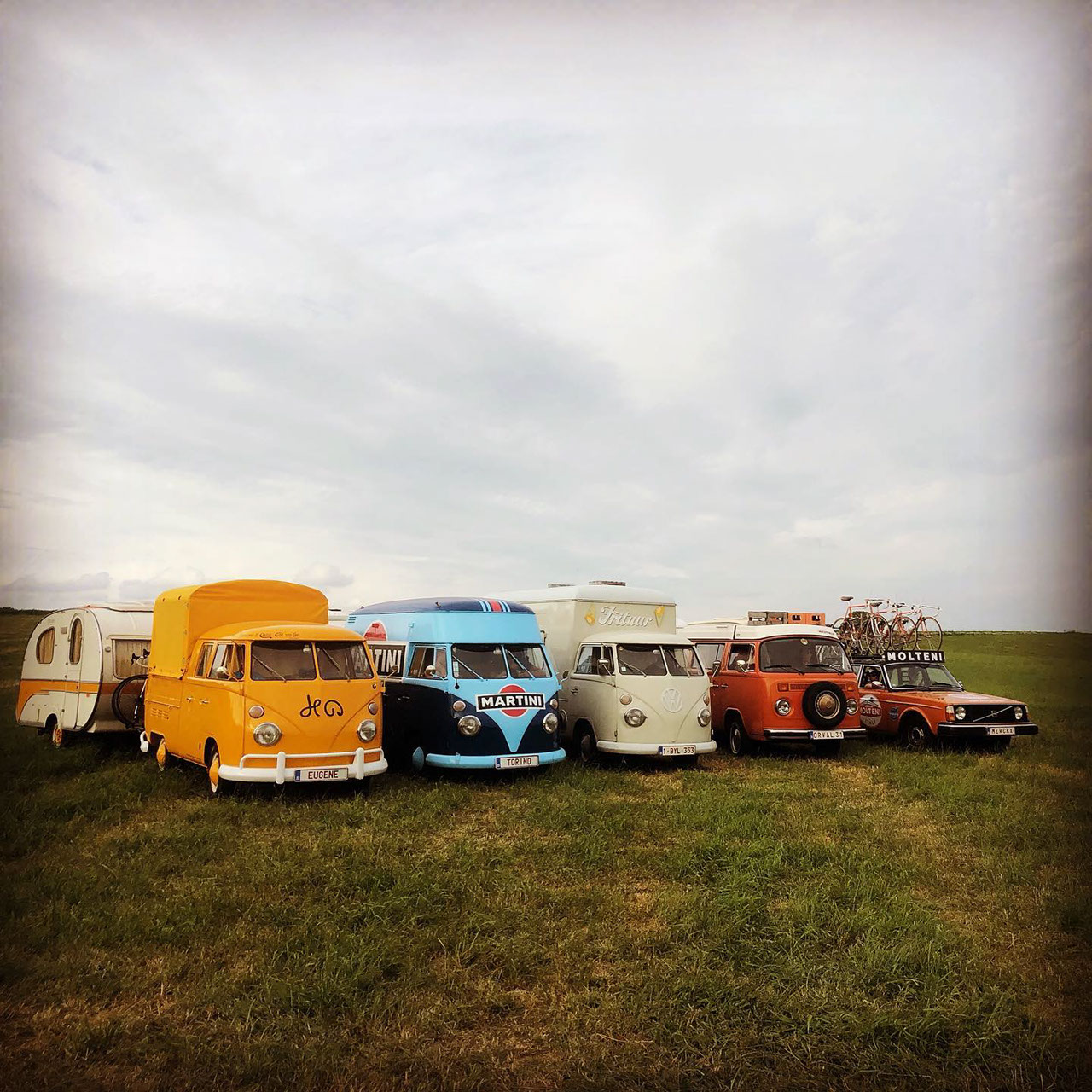 Café Welkom on Wheels in France between stages
Café Welkom on Wheels in France between stages
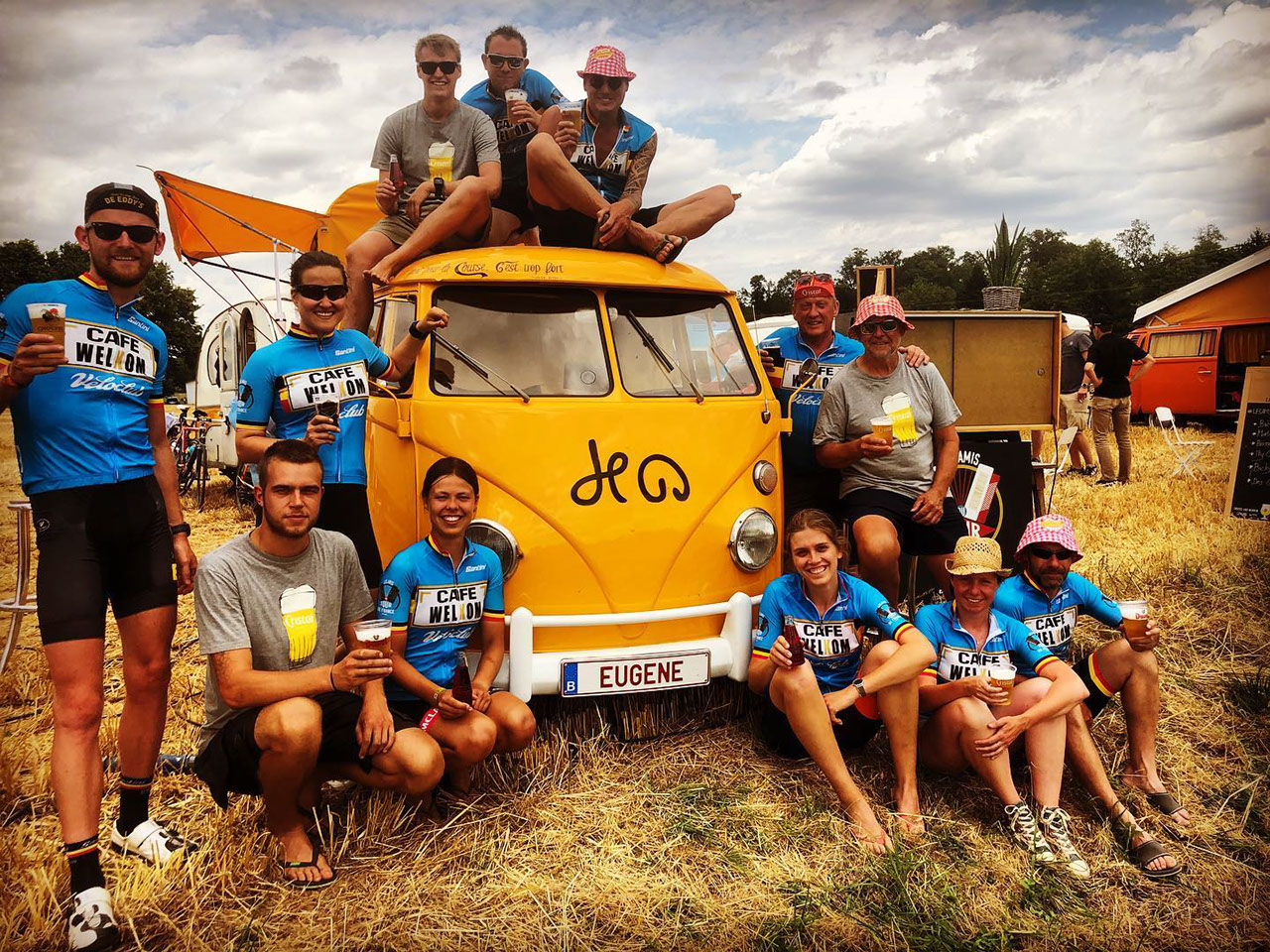 The crew of volunteers (Jo Helsen is on top of the bus on the right)
The crew of volunteers (Jo Helsen is on top of the bus on the right)
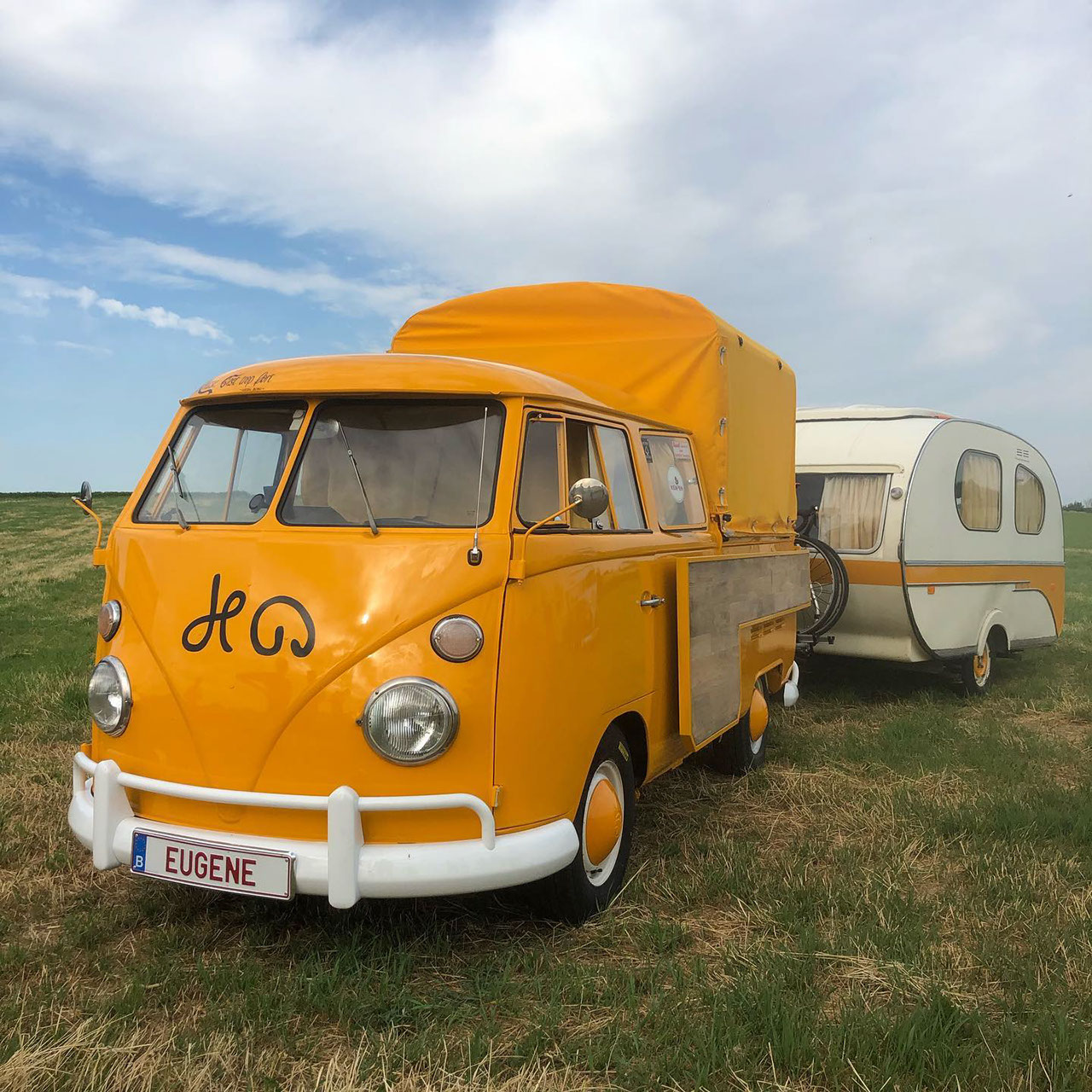 This bus was named Eugene to celebrate 100 years of the yellow jersey, after the first rider who wore it, Eugene Christophe
This bus was named Eugene to celebrate 100 years of the yellow jersey, after the first rider who wore it, Eugene Christophe
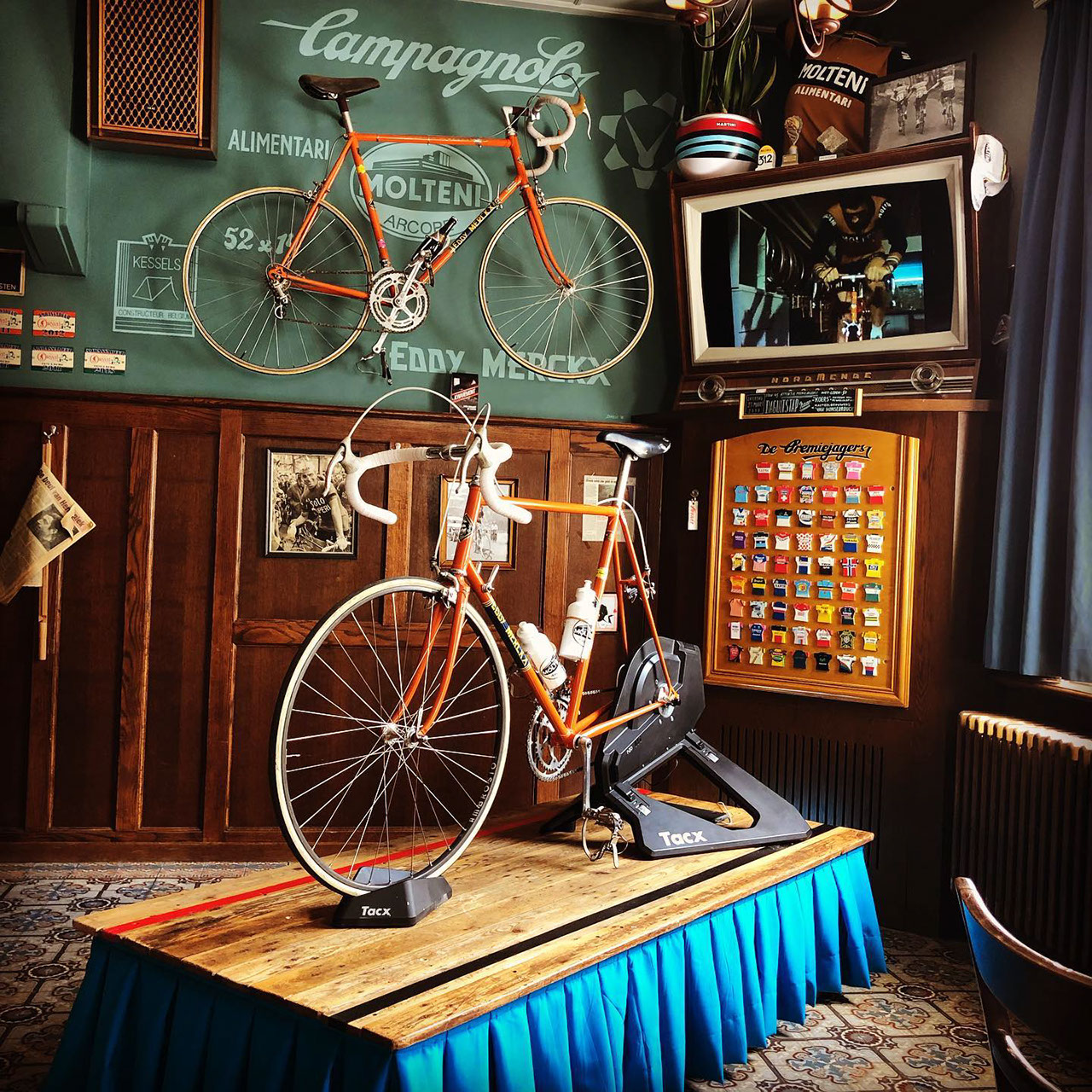 Inside Café Welkom Noorderwijk in Herentals, Belgium
Inside Café Welkom Noorderwijk in Herentals, Belgium
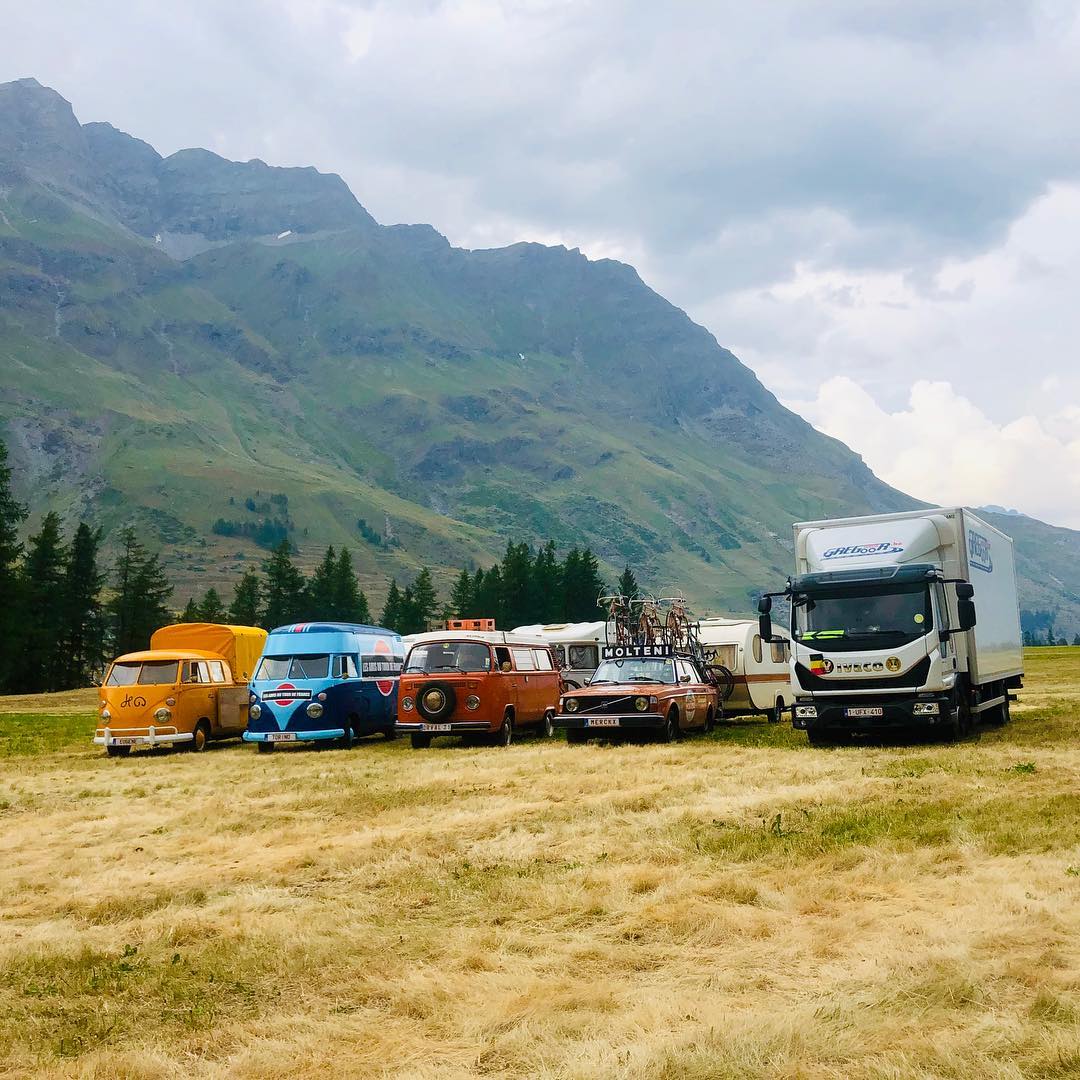 Café Welkom on Wheels in France between stages
Café Welkom on Wheels in France between stages
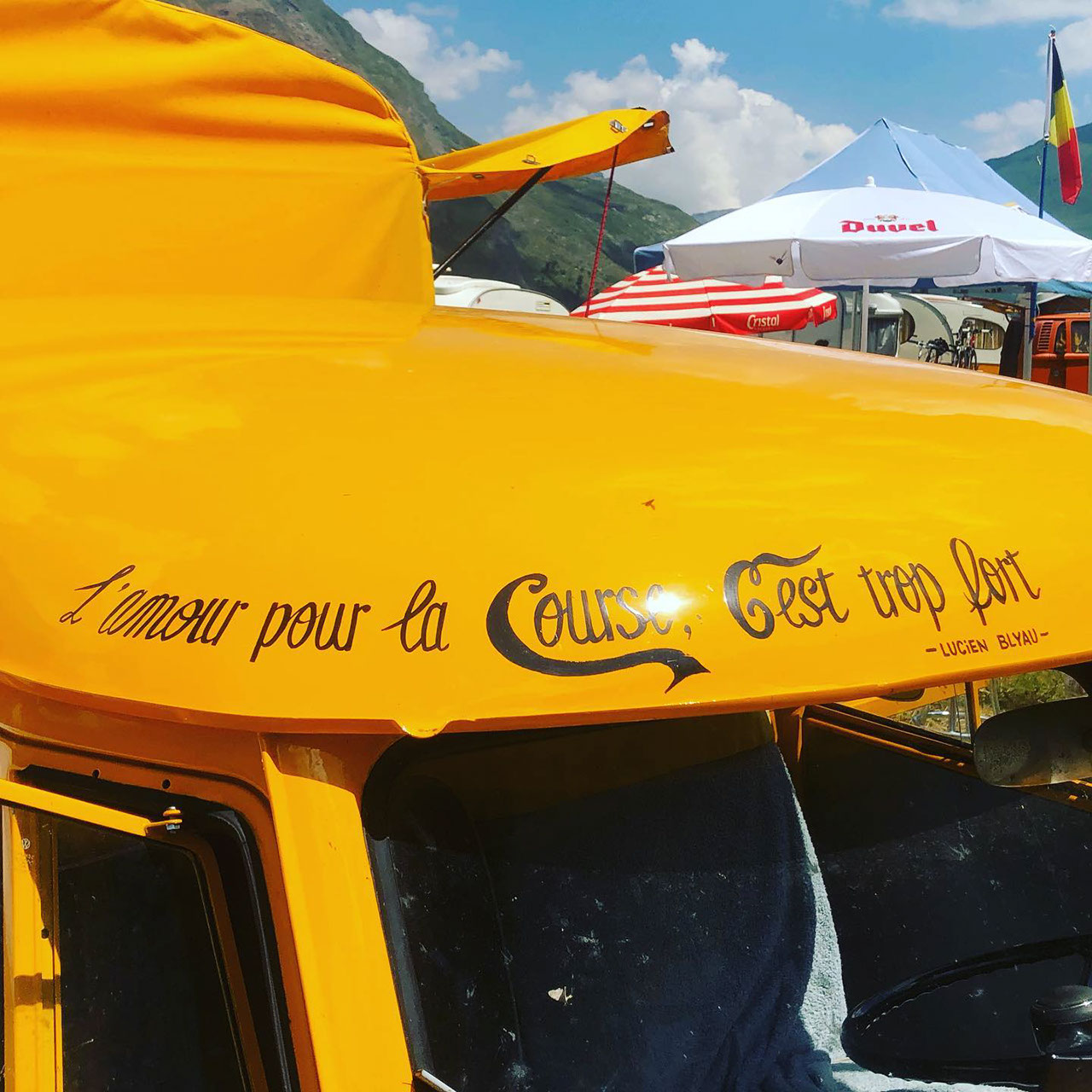 'The love for the race is too strong' - Lucien Blyau (the late Belgian Tour supporter was well known in the fan community)
'The love for the race is too strong' - Lucien Blyau (the late Belgian Tour supporter was well known in the fan community)
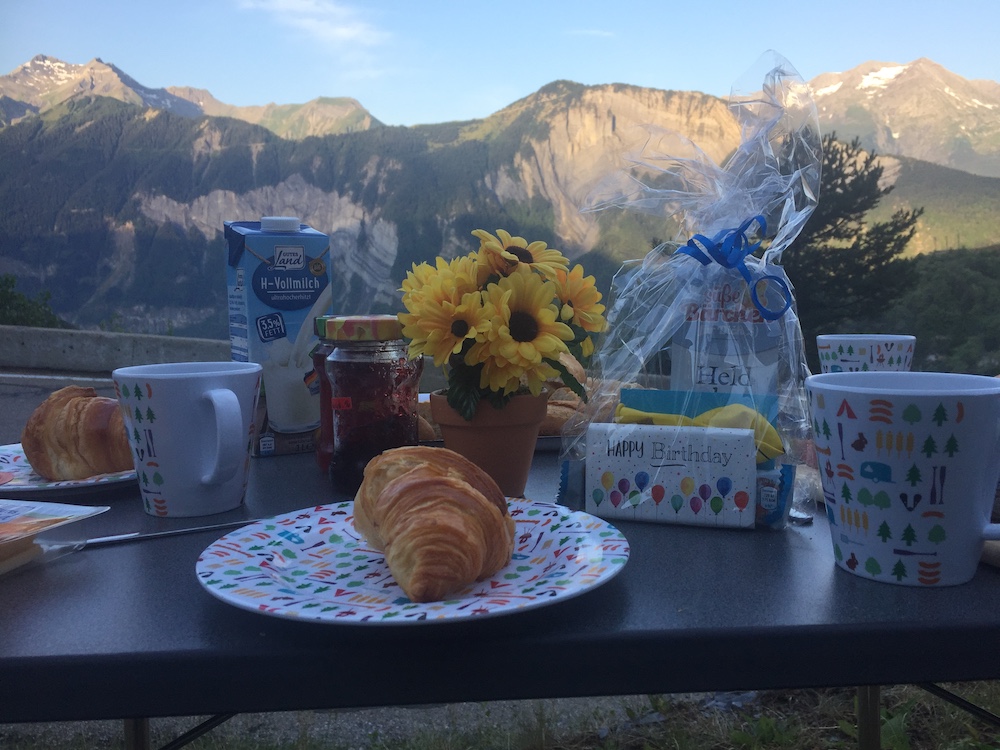 Breakfast with a view on the race route
Breakfast with a view on the race route
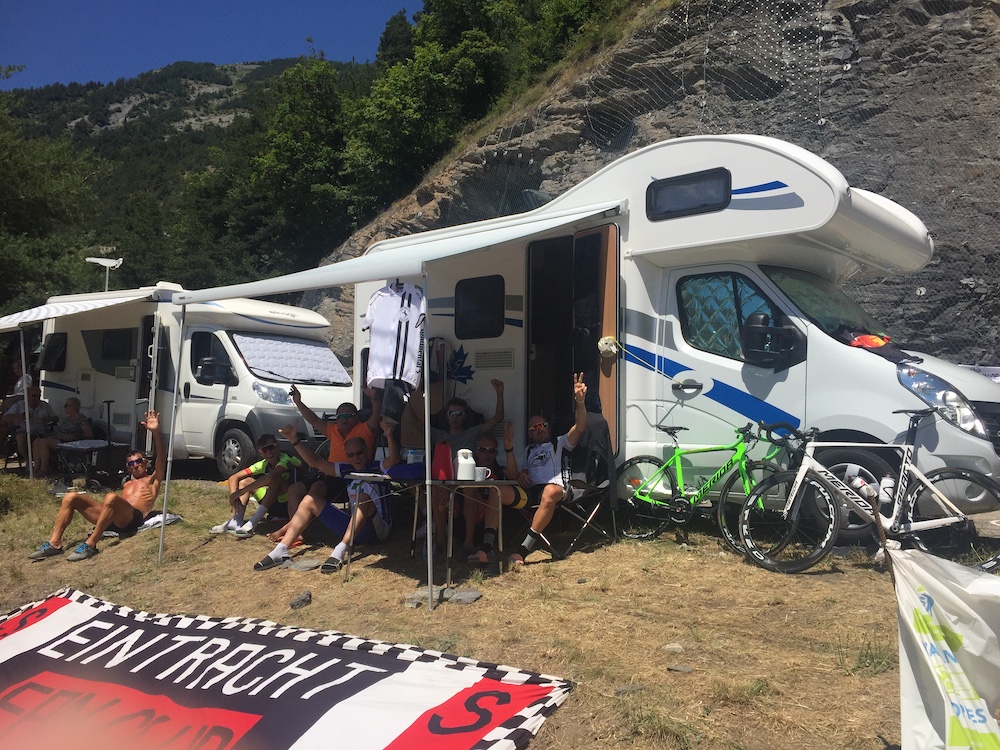 Fan flags don’t have to be bike-related. Meinhard Meister and Heiko Grabowski display a flag of their football club Eintracht Frankfurt
Fan flags don’t have to be bike-related. Meinhard Meister and Heiko Grabowski display a flag of their football club Eintracht Frankfurt
- Image 1
- Image 2
- Image 3
- Image 4
- Image 5
- Image 6
- Image 7
- Image 8
